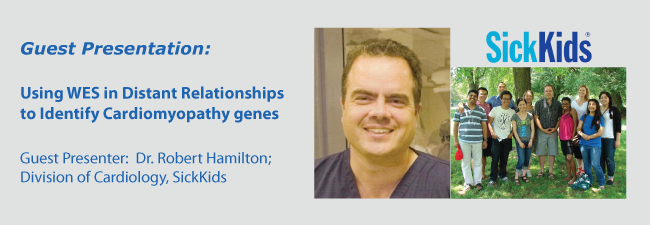Using Whole Exome Sequencing in distant relationships to identify cardiomyopathy genes
 |
Wednesday, June 8th
|
||
 |
||
| Cardiomyopathy (DCM; MIM 115200) are myocardial diseases that are frequently hereditary, yet remain gene-elusive for 60% of affected families. Traditional gene discovery techniques dependent on multigenerational samples are difficult to apply. This is because 1. Disease is often impenetrant in the youngest generation, 2. Samples are often not available in the oldest generation and 3. Incomplete penetrance and variable expressivity are common across all generations. However, a detailed family history will often identify definitively affected but distantly related individuals. Such families are highly powered for gene discovery using whole exome sequencing (WES) and analysis in SNP and Variation Suite (SVS) software.
As one of many examples, we report a 4-generation pedigree with a hereditary DCM phenotype. Three affected males in the family underwent cardiac transplant, and agreed to provide samples and participate in WES. The affected individuals had tested negative on a 46-gene clinical pan-cardiomyopathy panel. Explanted hearts demonstrated cardiomegaly with marked biventricular dilatation, fibrosis and pronounced histopathological findings. WES identified rare, possibly deleterious, heterozygous variants in 13 genes, including a novel 1-bp heterozygous deletion (c.913delC) in exon 4 of BAG3. The identified variant was PCR amplified and established by Sanger sequencing. BAG3 protein is significantly expressed in striated and cardiac muscle and colocalizes with Z-discs. Knockdown studies on BAG3 in mice and zebrafish models have demonstrated a DCM phenotypes and heart failure. Here we conclude that c.913delC in BAG3 is a contributing mutation in our family, and endorse WES and SVS as powerful tools for disease-gene identification, where classical linkage studies are not applicable in terms of sample size or disease-penetrance in autosomal dominant pedigrees. Additional examples of gene discovery in distant family relationships will be provided. Register at: https://attendee.gotowebinar.com/register/6134094381670643203 |
||